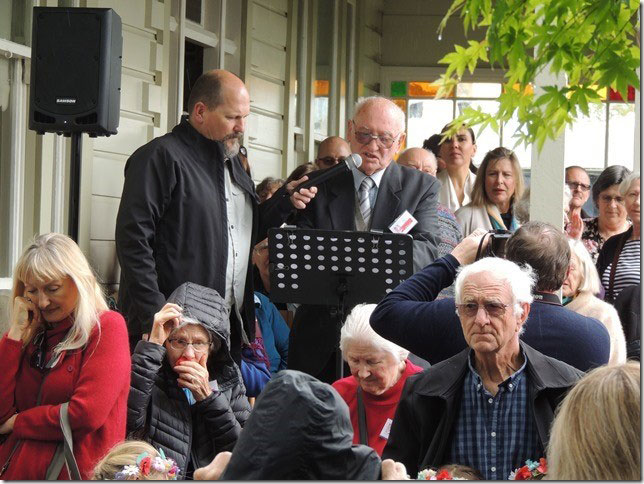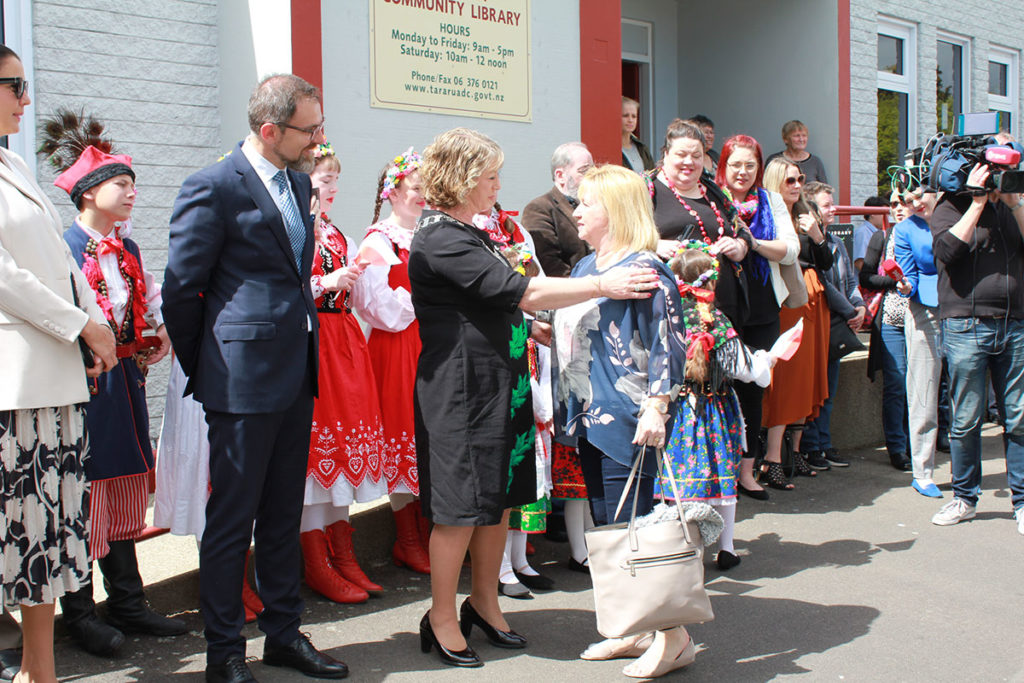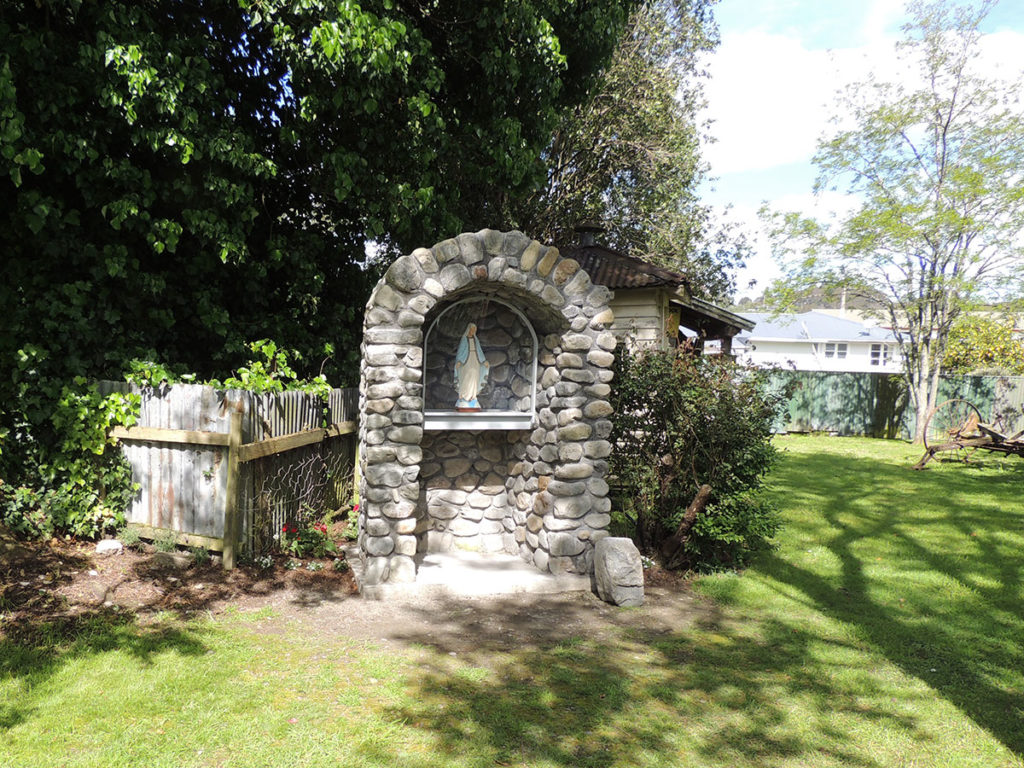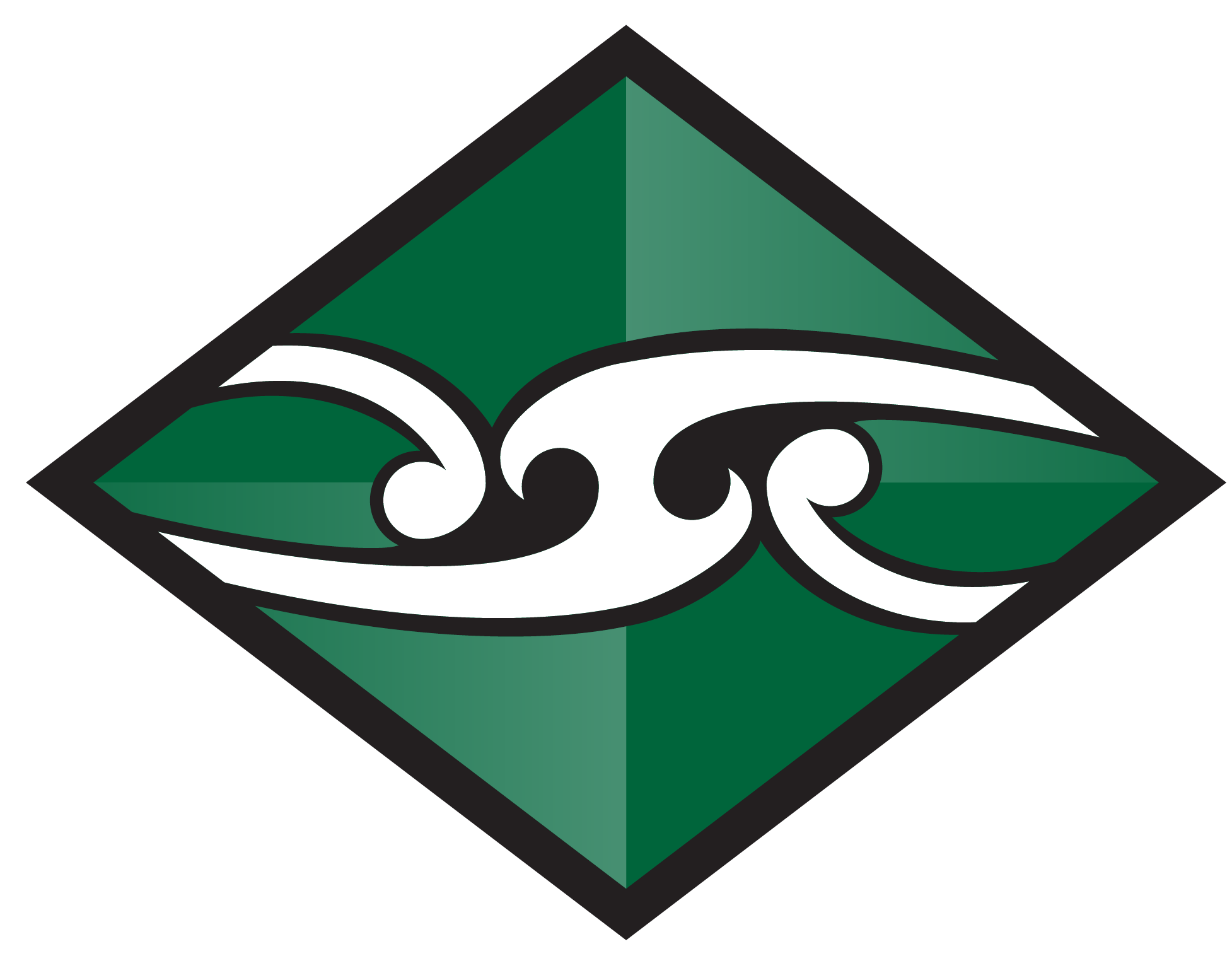2 December 2019
Phil Cotter, a life-long parishioner of St Brigid’s parish, Pahiatua, remembers as a seven-year-old welcoming the three trains carrying the Polish children and their care-givers in 1944. Phil has kept in touch ‘with all things Polish’ since and attended the 75th anniversary commemorations in Pahiatua on Friday 1 November.
Friday 1 November started with a day-trip from Wellington with two busloads of the Polish ‘children’ and their descendants returning to Pahiatua. They were led by a WW2 Army truck in a parade around Pahiatua’s beautiful Main St gardens and drove past hundreds of school students waving Polish flags. At the Town Hall, soldiers from Linton Army Camp as well as senior Tararua College boys in WW2 uniforms lined the entrance. The students gave a rousing haka of welcome to the visitors.
The visitors from the buses, and many others who had arrived by cars from all parts of the country, were excited by the photos of the camp days that Pahiatua Museum members had erected around the Town Hall walls. In the foyer was the oil painting of the Polish Black Madonna, Our Lady of Czestochowa, that was gifted to the children in 1945, and more recently presented to St Brigid’s Church for safe keeping.
On stage, the Tararua College Kapa Haka group gave a polished performance, followed by beautifully-dressed children performing intricate Polish traditional dances.
Official guests included the Polish Ambassador to New Zealand, Zbigniew Gniatkowski, MPs Ron Mark, Alastair Scott and Kieran McNulty, and the Mayor of Tararua District, Tracey Collis.
Louise Powick, Chair of Pahiatua on Track, introduced Mayor Collis, who welcomed the visitors and explained how the Polish children were invited to come to New Zealand in 1944.
The Polish children were brought to New Zealand though a plan sponsored and inspired by then Prime Minister, Peter Fraser. It was considered the least New Zealand could do to help the grievously-stricken country during WW2. When the Prime Minister visited the camp on 17 February 1945, he said: “I see a different lot of children, with a different look and with different bearing. To see them dancing was to know that the spirit of their country is rising up in them once again. This project is part of New Zealand’s war effort just as much as anything else we had done.”’

Polish Ambassador Zbigniew Gniatkowski looks on as Tararua District Mayor Tracey Collis welcomes Krysia Januszkiewicz-Reid, chairperson , Polish Children’s 75th Reunion.

Josef Zawada of the Pahiatua Children’s Camp talks about the camp’s grotto.

Grotto in Pahiatua Museum grounds similar to the grotto for Our Lady, built by the Polish children at the camp in 1940s. Photos: Phil Cotter, Steve Carle/Bush Telegraph, Pahiatua
Ambassador Gniatkowski thanked everyone in New Zealand who contributed to the success of the children’s settlement. He was presented with a model of the Tanya Ashkin sculpture, which marks the site of the Polish Children’s Camp beside State Highway 2. The wood for the model came from a 1200-year-old totara log from the Manawatu River and was formed by Māori master-carver Jeff Bryan. In return, Ambassador Gniatkowski presented beautiful, clear-perspex models of the sculpture to the organisers of the wonderful day. Embedded inside were footprints – representing the children’s footsteps.
The reunion organisers included Tereska Lepionka-Carroll and committee chair Krysia Januszkiewicz Reid ‒ the daughter of two of the Polish Pahiatua Camp children, Stan and Zofia Januszkiewicz.
In a moving speech Defence Minister Ron Mark spoke of his own upbringing in Pahiatua as a foster child and said he readily empathised with the Polish children. As a soldier, an officer and a war historian, he told the packed Town Hall of the bravery and sacrifice of Polish soldiers in the latter part of World War II, especially at Monte Casino. ‘I can only marvel at what Poland has achieved, the price it paid and how it has risen. And the children who came here are part of that history, that legacy. I think here in Pahiatua we are very privileged to have been able to play a small part in assisting that nation to recover in what we did.’ At the conclusion of his speech, the visitors rose to their feet and proudly and loudly sang a Polish hymn.
After lunch for the large group, many walked to the Pahiatua Museum to view the room dedicated to the Polish Camp and to those who had lived there. Museum Society volunteers had recently built a grotto in the museum grounds, similar to the one the Polish children had built to honour Our Lady in their camp in the 1940s. Josef Zawada told of how the original grotto was built from stones from the Mangatainoka River and of its importance in camp life and how the children often prayed before it.
Despite the drizzle, Pahiatua priest Fr Michael McVerry sm blessed the new grotto and prayed for the Polish people past and for those present.
A wreath-laying ceremony at the Polish memorial south of Pahiatua concluded this very memorable day of celebrating and remembering.
Additional source:
– Bush Telegraph, Pahiatua
Polish children arrive in Pahiatua
Seventy-five years ago, during the second world war, in November 1944, 733 Polish children – many of them orphans – and their 105 care-givers, arrived by boat from Iran to make a home in New Zealand. They began their new life at a camp just south of Pahiatua.
To mark the 75th anniversary of their arrival, many of the original children, now in their eighties and nineties, travelled from all parts of the country and met in Pahiatua and Wellington over the weekend of 1‒3 November. The commemorations included an official reception at the Pahiatua Town Hall followed by a lunch, a trip to the old camp in Pahiatua – now a farm – social gatherings, and Mass at St Mary of the Angels Church in Wellington on Sunday 3 November.
The children and their carers who arrived at the Pahiatua Camp in 1944, were among the hundreds of thousands of displaced Poles who had been deported from their home country to Siberian work camps by Russia, when Poland was split under Russian and German control, and later evacuated to Iran under an amnesty reached with Russia in 1941.
Many of the children had lost their parents during the harrowing deportation or harsh labour camp conditions, or their fathers were fighting for the Polish Army.
In 1944, under humanitarian grounds, New Zealand’s then Prime Minister Peter Fraser invited the group to stay and they became known as the Pahiatua Polish Children.
Stanislaw Januszkiewicz said the 75th anniversary was about celebrating the opportunity the children were given to settle in New Zealand.
‘It was a real blessing for us to come here and be able to stay. It means a lot to many of us who grew up in Pahiatua,’ he said about the camp that was effectively an orphanage, ‘where we felt like one big family.’
General
Published on 22nd Apr, 2024
[..]
May 2024 Funding Round | Catholic Charities Foundation
General
Published on 1st Mar, 2024
Applications for the May 2024 Catholic Charities funding round are now open [..]
Hamilton Diocese Job Vacancy
General
Published on 29th Jan, 2024
Pastoral Services Manager sought for Catholic Diocese of Hamilton [..]
Vacancies
General
Published on 25th Jan, 2024
A number of job vacancies are available across the country [..]
2024 Clergy Shifts - Diocese of Palmerston North
General
Published on 11th Dec, 2023
Bishop John would like to announce the Clergy shifts for 2024 [..]
